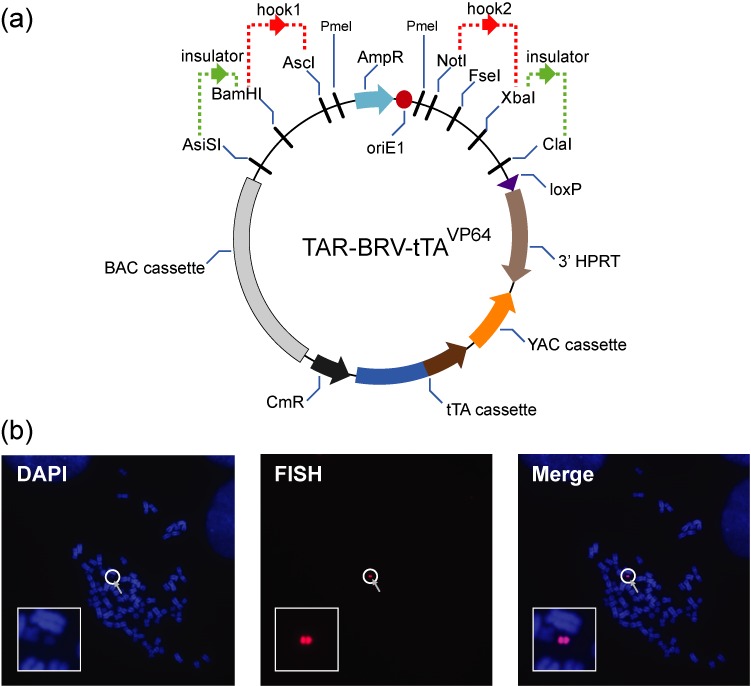Figure 6.

(a) A scheme of the TAR-BRV- tTAVP64 vector. This vector contains restriction sites for insertion of two unique targeting sequences (hooks) (dot red) homologous to 5' and 3' ends of a gene of interest and restriction sites for insertion of chromatin insulators to protect a gene from silencing (dot green). The vector also contains a YAC cassette that includes a yeast selectable marker HIS3 for selection in yeast and a yeast centromere CEN6 for proper segregation in yeast cells. The TAR-BRV- tTAVP64 vector also contains a BAC cassette that includes a F’ factor origin of replication and the chloramphenicol acetyltransferase (CmR) gene for selection in bacterial cells. For gene TAR cloning experiments, the TAR-BRV- tTAVP64 vector DNA should be linearized by a unique endonuclease located between the hooks to expose targeting sequences (hooks). The TAR-BRV- tTAVP64 vector also contains a 3' HPRT-loxP cassette allowing a further loading of a TAR-gene isolate into the unique loxP site of the alphoidtetO-HAC in hamster CHO cells by Cre/loxP mediated recombination, from where the HAC may be MMCT-transferred to the recipient human cells for further gene function analysis. The TAR-BRV- tTAVP64 vector also contains the tTAVP64 chromatin modifier that is constitutively expressed from the HAC. In the presence of doxycycline the tTAVP64 cannot bind to the tetO-sequences in the alphoidtetO-HAC. (b) FISH analysis of the HAC containing the TAR-BRV- tTAVP64 vector in HT1080 cells. Chromosomal DNA was counterstained with DAPI (blue). The HAC was visualized using a vector probe (red).
